Postpartum Hemorrhage Devices Market Size
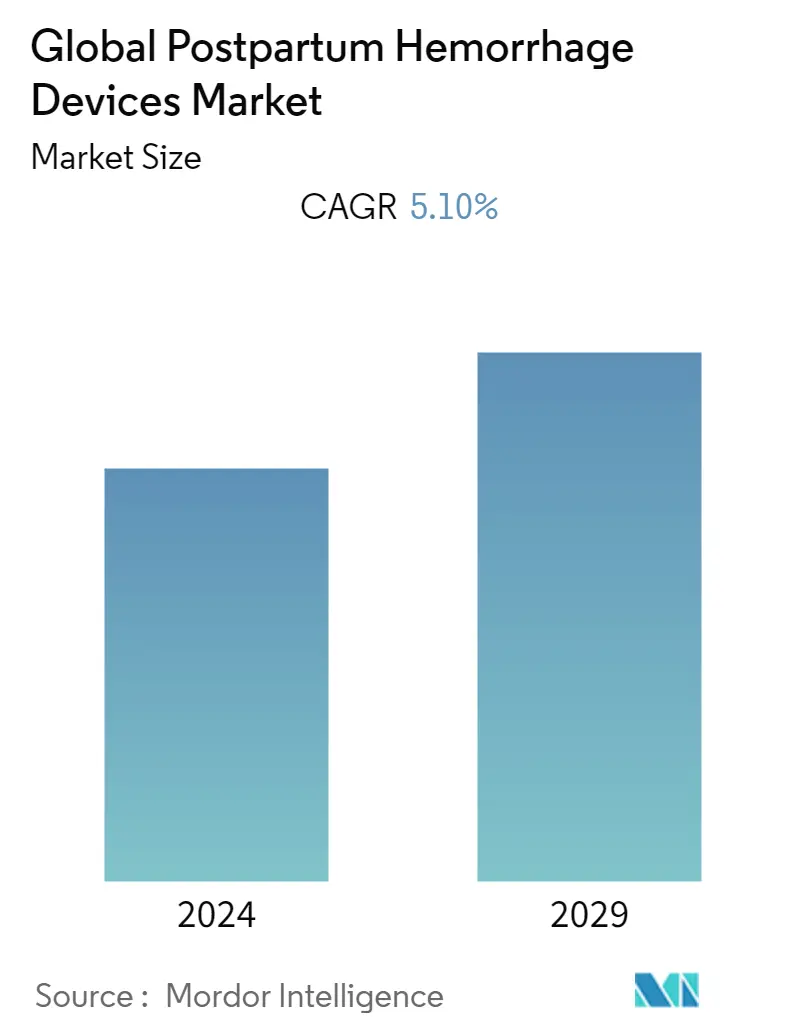
| Study Period | 2019 - 2029 |
| Base Year For Estimation | 2023 |
| CAGR | 5.10 % |
| Fastest Growing Market | Asia-Pacific |
| Largest Market | North America |
| Market Concentration | Medium |
Major Players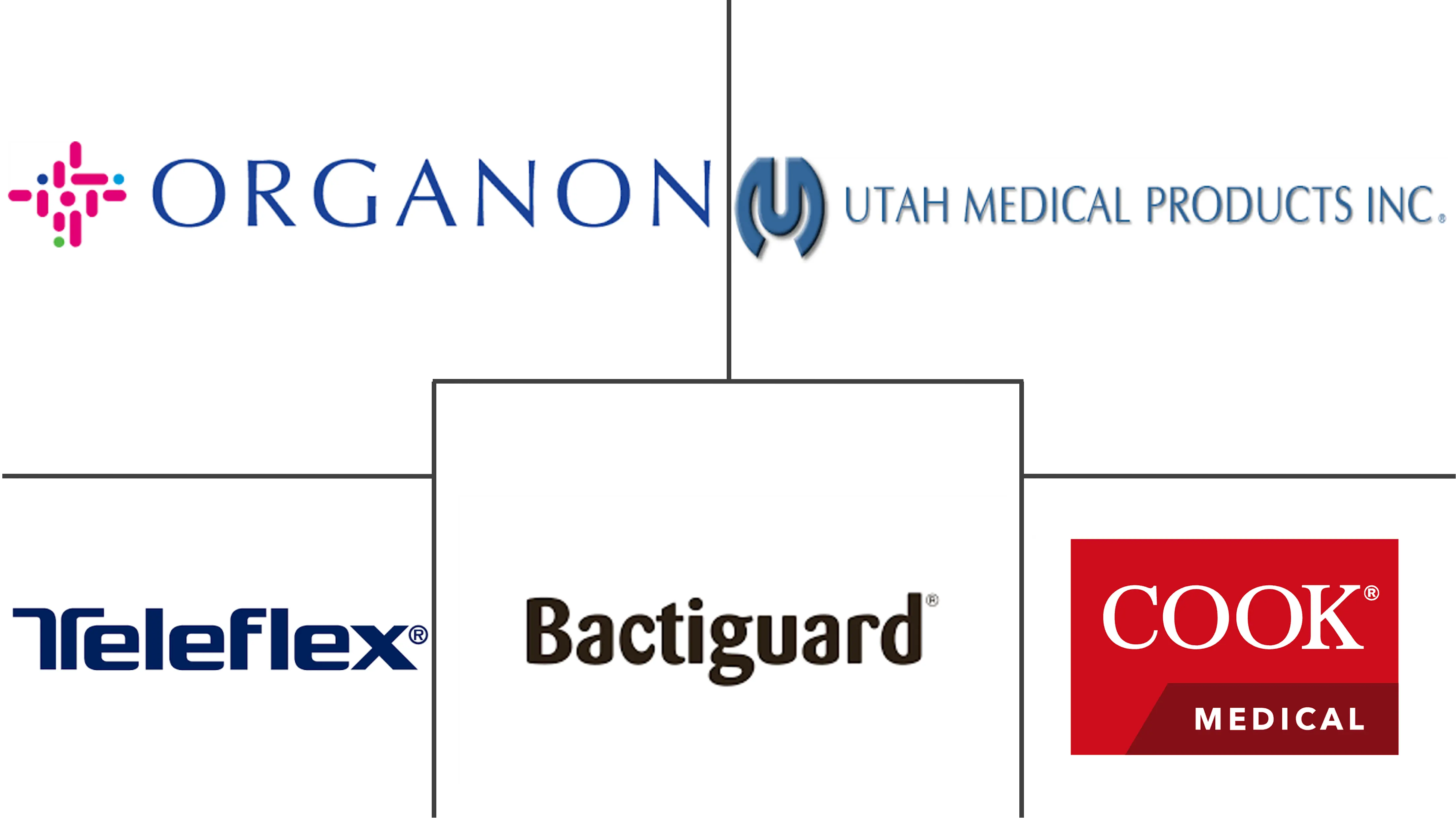
*Disclaimer: Major Players sorted in no particular order |
Need a report that reflects how COVID-19 has impacted this market and its growth?
Postpartum Hemorrhage Devices Market Analysis
The postpartum hemorrhage devices market is expected to register a CAGR of 5.1% over the forecast period (2022-2027).
The COVID-19 pandemic significantly impacted the market for postpartum hemorrhage devices at the beginning. The American College of Obstetricians and Gynaecologists 2022 reports that pregnant women who have COVID-19 and show symptoms are more likely than nonpregnant women with COVID-19 symptoms to require intensive care, require a ventilator (for breathing support), or die as a result of the illness. Despite this, pregnant women's overall risk of serious disease and death is minimal. The COVID-19 outbreak affected the market's growth adversely in its preliminary phase; however, the number of pregnancy complications has increased, and so has the demand for postpartum hemorrhage devices to treat patients and save the lives of mothers, assisting in the advancement of the industry.
Further, the increasing rate of complications in pregnancies is a major factor driving the demand for postpartum hemorrhage devices, thereby contributing to market growth. The 2021 bulletin published in the journal of Obstetrics and Gynecology explains the atrocities of anemia during pregnancy. Iron deficiency and abrupt blood loss are the two most common causes of anemia during pregnancy and puerperium. During pregnancy, iron requirements rise, and failing to maintain adequate iron levels can have negative maternal-fetal implications. Such factors will likely boost the adoption of postpartum hemorrhage devices, thereby contributing to market growth.
Moreover, market players are involved in marketing strategies like mergers and acquisitions of products launched. For instance, in 2021, Merck announced the acquisition of Alydia Health on behalf of its planned spinoff of Organon, which implements dedication to enhancing women's health through addressing unmet medical needs in maternal health by facilitating safer delivery. The Jada System, Alydia's technology, is designed to induce natural uterine contractions to prevent excessive bleeding after childbirth. The United States Food and Drug Administration granted Alydia 510(k) clearance (marketing authorization) for the Jada System in August 2020, based on the company's pivotal PEARLE IDE Study results. The Global Health Investment Fund and AXA IM Alts, through its Impact Investing Strategy, are Alydia's lead institutional investors. They are social impact funds that invest in innovative technologies that can generate attractive financial returns while helping address major public health issues worldwide. Additionally, in September 2021, Stryker announced the acquisition of Gauss Surgical, a medical device firm that created TritonTM, an artificial intelligence-powered platform for real-time blood loss monitoring during surgery. Triton has shown advantages in maternity and surgical care by detecting hemorrhage earlier and intervening sooner.
Furthermore, prominent market competitors favorably impact the industry's growth through new product releases and strategic efforts by prominent market competitors. For example, in March 2022 Baymatob's wearable devices completed capital rise to advance life-saving labor monitoring devices. Baymatob's wearable device Oli uses innovative sensor technology and AI interpretation to detect a Pending PPH during labor before postpartum bleeding starts.
Therefore, owing to the aforementioned factors, the studied market is anticipated to witness growth over the analysis period. However, the lack of trained professionals restrains the postpartum hemorrhage market growth.
Postpartum Hemorrhage Devices Market Trends
This section covers the major market trends shaping the Postpartum Hemorrhage Devices Market according to our research experts:
Uterine Tamponade Devices are Expected to Witness a Positive Growth Over the Forecast Period
Uterine balloon tamponade is a non-surgical treatment for refractory postpartum bleeding. It can be used to tamponade uterine bleeding without operational intervention once postpartum hemorrhage has been recognized, and medicinal care has been given. When filled with fluid, the collapsed balloon is put into the uterus, which adapts to the shape of the uterine cavity to tamponade uterine hemorrhage. The catheter's central lumen facilitates drainage and is meant to detect any bleeding that occurs above the balloon's level. By delivering tamponade to the bleeding, uterine surface, uterine packing is a safe, straightforward, and practical approach to controlling postpartum hemorrhage.
The study published in MDLinx in 2021 explains the future advances in vacuum-induced uterine tamponade devices, which impart negative pressure to the uterus, causing the bleeding cavity to contract and leaking blood vessels to close. This low-cost, noninvasive method could be precious in developing nations where other treatment options are limited. Hence, owing to the advantages offered by uterine balloon tamponade, the adoption of these products is likely to increase among the target population, ultimately driving the market growth.
Furthermore, in 2021, a research article published in BMJ Case Reports found that condom tamponade can significantly reduce maternal morbidity and mortality associated with postpartum hemorrhage. In that study, they explain that condom tamponade saves both time and life of patients with positive results.
As per the article published in 2021 in Pubmed Central, substantiating the use of Bakri balloon plus cervical cerclage for the prevention and treatment of postpartum hemorrhage in late pregnancy complicated with acute aortic dissection provides satisfactory results.
Therefore, the uterine tamponade segment is expected to witness significant positive growth over the forecast period due to the abovementioned factors.
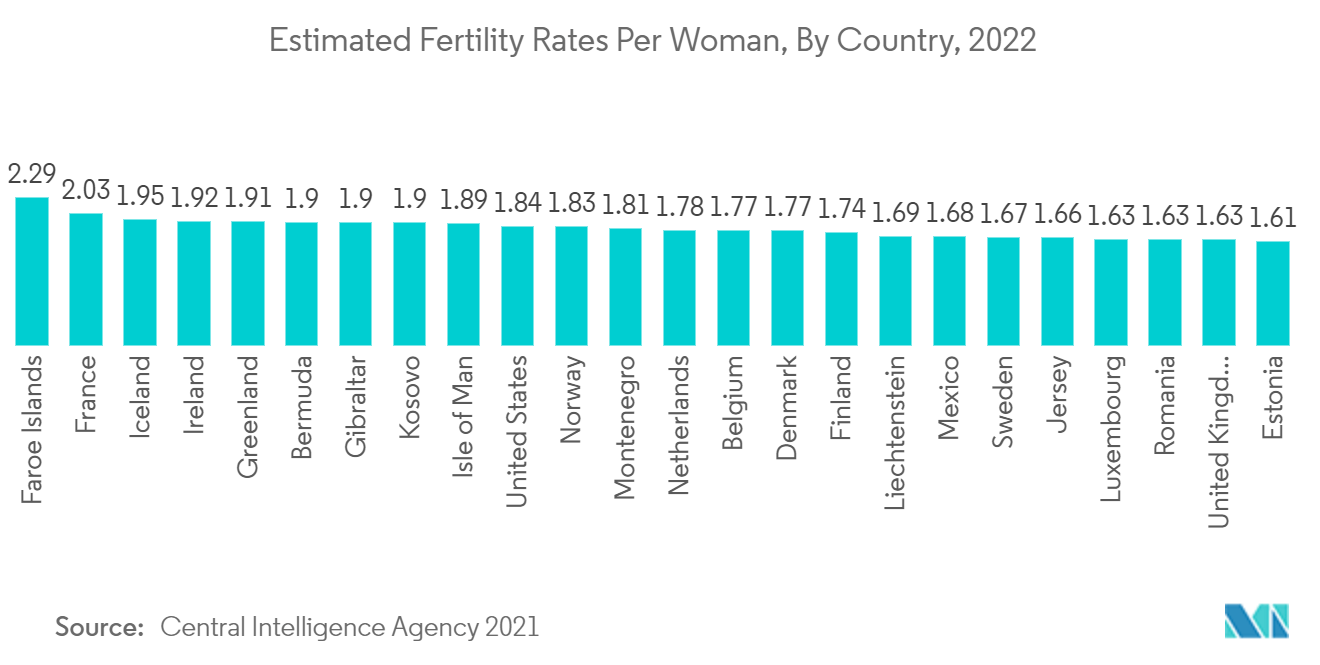
North America is Expected to Dominate the Postpartum Hemorrhage Devices Market Over the Forecast Period
North America had the largest market share for postpartum hemorrhage devices during the forecast period. The emergence of this region can be attributed to an increase in postpartum bleeding or hemorrhage in the United States and the rest of North America. The article published in 2020 in The Commonwealth Fund publication, 'Maternal Mortality and Maternity Care in the United States Compared to 10 Other Developed Countries,' explains that the United States has the highest maternal mortality rate among developed countries. Approximately one-third of all pregnancy-related deaths in the United States occur during pregnancy, as measured up to one year after birth. Moreover, the Postpartum Hemorrhage market in North America is being driven by advancements in healthcare infrastructure and rising healthcare spending. Also, increased awareness of sophisticated postpartum hemorrhage treatments grows the market.
Furthermore, the other factors involved in the growth of the postpartum hemorrhage market include key product approvals, increased pregnancy complications, and mortality rate or manufacturer's presence in the country. For Instance, in September 2021, the Food and Drug Administration approved Jada System, a medical device designed to control and treat abnormal postpartum uterine bleeding or hemorrhage when conservative therapy is required. Jada was approved for the first time in August 2020, based on findings from the PEARLE IDE research (Identifier: NCT02883673), which found that the device was 94.3 percent effective (n=100/106; P.001) in preventing postpartum hemorrhage (primary endpoint; defined as the avoidance of nonsurgical, second-line or surgical intervention to control uterine bleeding after the use of the Jada System). As a result of the factors above, the studied market is expected to increase in the North American region.
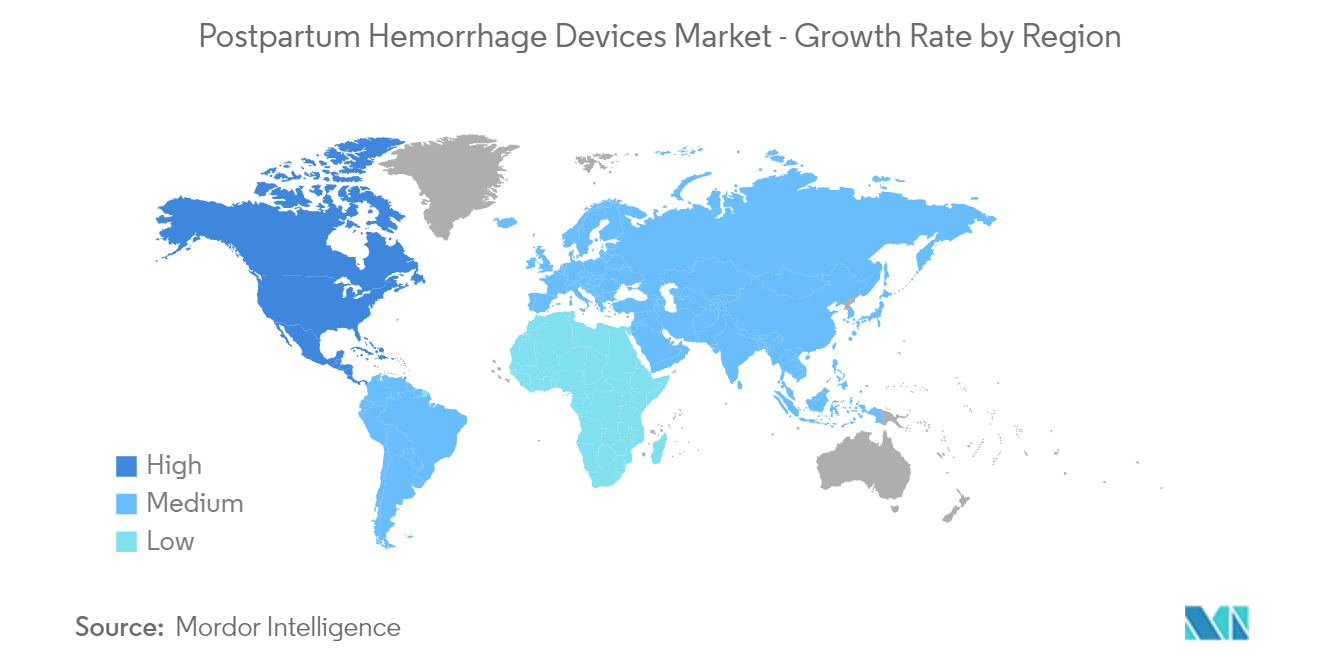
Postpartum Hemorrhage Devices Industry Overview
The postpartum hemorrhage devices market is fragmented due to the presence of several companies operating globally and regionally. The competitive landscape includes an analysis of a few international and local companies that hold the market shares and are well known. Include Bactiguard, Cook Medical, Utah Medical Products, Inc., Teleflex Incorporated, and Organon & Co., among others.
Postpartum Hemorrhage Devices Market Leaders
-
Bactiguard
-
Cook Medical
-
Utah Medical Products, Inc.
-
Teleflex Incorporated
-
Organon & Co.
*Disclaimer: Major Players sorted in no particular order
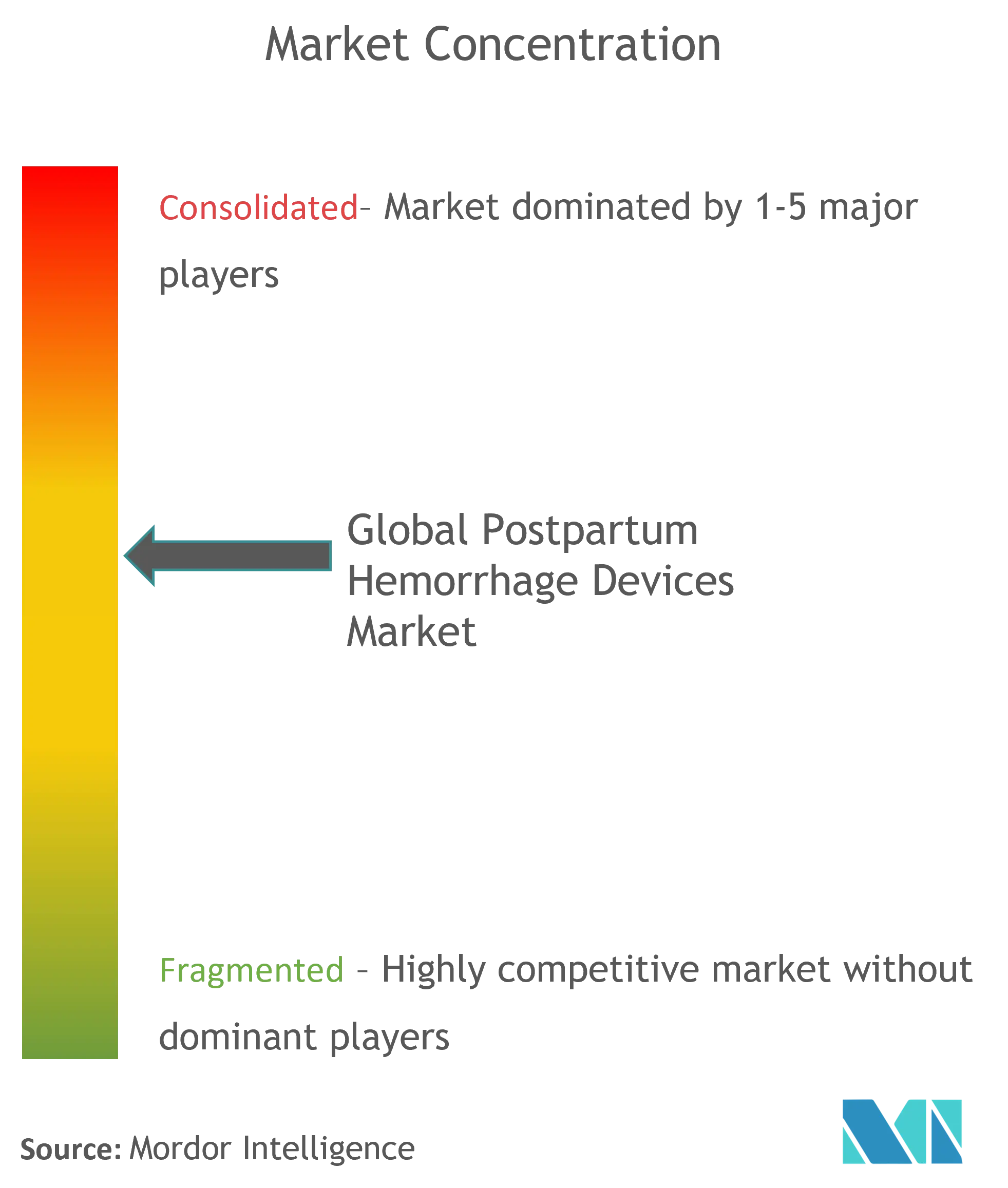
Postpartum Hemorrhage Devices Market News
- In May 2022 FIGO and the International Confederation of Midwives launched a generic post-paryum hemorrhage protocol to aid the development of national clinical protocols on PPH prevention and treatment.
- In March 2022 Baymatob's wearable devices completed capital rise to advance life-saving labor monitoring devices. Baymatob's wearable device Oli uses innovative sensor technology and AI interpretation to detect a Pending PPH during labor before postpartum bleeding starts.
Postpartum Hemorrhage Devices Market Report - Table of Contents
1. INTRODUCTION
1.1 Study Assumptions and Market Definition
1.2 Scope of the Study
2. RESEARCH METHODOLOGY
3. EXECUTIVE SUMMARY
4. MARKET DYNAMICS
4.1 Market Overview
4.2 Market Drivers
4.2.1 Increasing Occurrence of Conditions like Placental Abruption, Multiple Pregnancy and Inverted Uterus and other pregnancy complications (Anemia)
4.2.2 Inflated Number of Government Initiatives Coupled with Increased Awareness
4.3 Market Restraints
4.3.1 High Cost of PPH Devices & Lack of Trained Proffesionals
4.4 Porter's Five Forces Analysis
4.4.1 Threat of New Entrants
4.4.2 Bargaining Power of Buyers/Consumers
4.4.3 Bargaining Power of Suppliers
4.4.4 Threat of Substitute Products
4.4.5 Intensity of Competitive Rivalry
5. MARKET SEGMENTATION (Market Size by Value - USD million)
5.1 By Product Type
5.1.1 Non-Pneumatic Anti-Shock Garment
5.1.2 Prefilled Injection System
5.1.3 Uterine Tamponade Devices
5.2 By End User
5.2.1 Hospitals
5.2.2 Clinics
5.2.3 Other End Users
5.3 Geography
5.3.1 North America
5.3.1.1 United States
5.3.1.2 Canada
5.3.1.3 Mexico
5.3.2 Europe
5.3.2.1 Germany
5.3.2.2 United Kingdom
5.3.2.3 France
5.3.2.4 Italy
5.3.2.5 Spain
5.3.2.6 Rest of Europe
5.3.3 Asia-Pacific
5.3.3.1 China
5.3.3.2 Japan
5.3.3.3 India
5.3.3.4 Australia
5.3.3.5 South Korea
5.3.3.6 Rest of Asia-Pacific
5.3.4 Middle-East and Africa
5.3.4.1 GCC
5.3.4.2 South Africa
5.3.4.3 Rest of Middle-East and Africa
5.3.5 South America
5.3.5.1 Brazil
5.3.5.2 Argentina
5.3.5.3 Rest of South America
6. COMPETITIVE LANDSCAPE
6.1 Company Profiles
6.1.1 Bactiguard
6.1.2 Cook Medical
6.1.3 Utah Medical Products, Inc.
6.1.4 Teleflex Incorporated
6.1.5 Sinapi Biomedical
6.1.6 Zoex Niasg
6.1.7 3D Stone Design Inc.
6.1.8 Organon & Co.
6.1.9 Laborie (Clinical Innovations)
6.1.10 Becton, Dickinson and Company
6.1.11 Boen Healthcare Co., Ltd
- *List Not Exhaustive
7. MARKET OPPORTUNITIES AND FUTURE TRENDS
Postpartum Hemorrhage Devices Industry Segmentation
As per the scope of the report, Postpartum hemorrhage devices are a type of treatment device when there is significant vaginal bleeding that occurs after a baby is born. Postpartum hemorrhage is a dangerous illness that can result in death. Dizziness, faintness, and blurred vision are further symptoms of postpartum bleeding. Postpartum hemorrhage can develop after delivery or up to 12 weeks after giving birth. Early detection and prompt treatment with proper devices can lead to a full recovery. The postpartum hemorrhage devices market is segmented by Product Type (Non-Pneumatic Anti-Shock Garment, Prefilled Injection System, Uterine Tamponade Devices), End Users (Hospitals, Clinics & Other End Users), Geography (North America, Europe, Asia-Pacific, Middle East and Africa and South Africa). The market report also covers the estimated market sizes and trends for 17 different countries across major regions, globally. The report offers the value (in USD million) for the above segments.
| By Product Type | |
| Non-Pneumatic Anti-Shock Garment | |
| Prefilled Injection System | |
| Uterine Tamponade Devices |
| By End User | |
| Hospitals | |
| Clinics | |
| Other End Users |
| Geography | ||||||||
| ||||||||
| ||||||||
| ||||||||
| ||||||||
|
Postpartum Hemorrhage Devices Market Research FAQs
What is the current Global Postpartum Hemorrhage Devices Market size?
The Global Postpartum Hemorrhage Devices Market is projected to register a CAGR of 5.10% during the forecast period (2024-2029)
Who are the key players in Global Postpartum Hemorrhage Devices Market?
Bactiguard, Cook Medical, Utah Medical Products, Inc., Teleflex Incorporated and Organon & Co. are the major companies operating in the Global Postpartum Hemorrhage Devices Market.
Which is the fastest growing region in Global Postpartum Hemorrhage Devices Market?
Asia-Pacific is estimated to grow at the highest CAGR over the forecast period (2024-2029).
Which region has the biggest share in Global Postpartum Hemorrhage Devices Market?
In 2024, the North America accounts for the largest market share in Global Postpartum Hemorrhage Devices Market.
What years does this Global Postpartum Hemorrhage Devices Market cover?
The report covers the Global Postpartum Hemorrhage Devices Market historical market size for years: 2019, 2020, 2021, 2022 and 2023. The report also forecasts the Global Postpartum Hemorrhage Devices Market size for years: 2024, 2025, 2026, 2027, 2028 and 2029.
Global Postpartum Hemorrhage Devices Industry Report
Statistics for the 2024 Global Postpartum Hemorrhage Devices market share, size and revenue growth rate, created by Mordor Intelligence™ Industry Reports. Global Postpartum Hemorrhage Devices analysis includes a market forecast outlook to 2029 and historical overview. Get a sample of this industry analysis as a free report PDF download.

